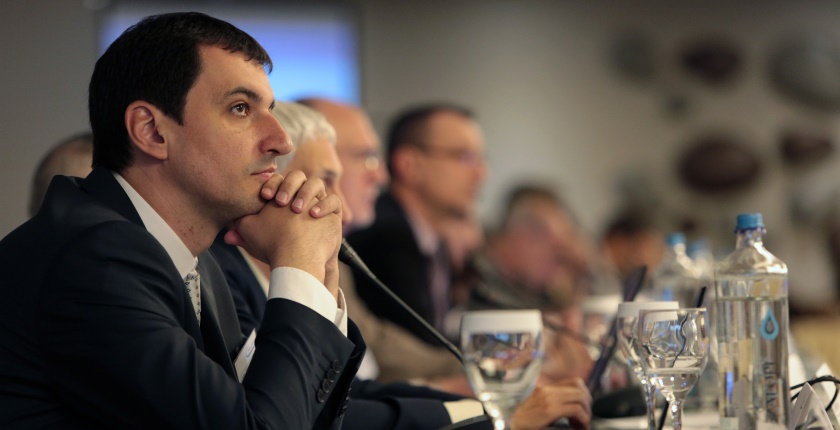
Photo: Ljubo Knežević
Author: Ljubo Knežević, energy expert, former President of the Council of the Montenegrin Investment Agency and Adviser to the Prime Minister of Montenegro
Once upon a time, when greenhouse gas emissions were freely and extensively warming up the atmosphere, there were some people dreaming of the times when green energy will be cheaper than “conventional” one.
However, it’s hard to imagine that many of them had this in mind: Average futures for 2022 yearly band in South-East Europe went around 110 €/MWh in September! So, there we are. Most expensive RES PPAs, at least in Montenegro don’t go over 105 €/MWh (except for a few small rooftop PVs). Kind of “If the Mountain won’t go to Mohammed, then Mohammed must come to the Mountain” situation.
As in many other countries, electricity consumers in Montenegro are paying an electricity surcharge, aimed to stimulate the construction of new renewable sources. It is frequently misinterpreted as an obligation for the citizens, not the consumers, making it extremely attractive for political debates (poor vs. rich, workers vs. investors…). In reality it’s much simpler, almost boring: those that use energy (consumers, not citizens) pay to those that produce it (producers, not necessarily rich guys) to do it in a green way (ok, at least greener-than-from-the-coal way). At the end (of the concession period), the state (so – all citizens) gets the plant for free.
Power production capacity increase since 2016 in Montenegro is entirely from renewables
The subsidies were controversial, many times disputed, but obviously effective. From 2016 to 2020 Montenegrin production capacity increased 12%. All RES. Yes, the system was designed and launched way before, so one should keep in mind different times, different conditions and different assumptions that decision makers had in mind. But the facts are:
- public off-taker buys electricity from IPPs at PPA contracted prices with a weighted average below 110€/MWh.
- market price 2022 futures for the same quality electricity was above 110€/MWh in September, being the key element of the “public off-taker – supplier” relation.
- supplier that got the energy at around 110€/MWh can use it for closing its own market position or even sell it immediately (beginning of October the same profile goes over 140€/MWh).
In other words, RES energy is cheaper to the end consumers than the market alternatives. At the same time, the public off-taker gains some profit from the PPA vs. the market price differential, so no additional funds are needed to close the long-term obligations. In parallel nor even the supplier is negatively affected (actually could make some significant gain, at the moment).
It’s obviously time to share the benefits of the “good old times” actions. The question is: How?
Option 1: Citizens take it all
If the current surcharge on the electricity bill is kept, the RES support fund would accumulate sufficient means to pay out all the investors way before the date scheduled by the BOT agreements. That way, the state (all citizens) would become the owner of the valuable production assets sooner than expected.
Pro: keeping the surcharge would keep the current positive pressure for energy efficiency, as well as keep the motivation for further penetration of prosumers, helping the current energy crisis mitigation.
Contra: electricity users that were obliged to pay the surcharge when RES price was way above the market price, do not get any relief now when the market price went wild.
Option 2: “Discount” season
RES surcharge makes between 4 and 8% of the household electricity bill (except for consumers spending up to the 300kWh per month, that don’t pay it at all). A legitimate option would be to cancel the surcharge or even pay back some amount to the consumers (e.g. “tax credit”).
Pro: consumers would be supported during the “hard times” when it would be reasonable to expect the rise of electricity price itself, as well as grid tariffs. In other words, the surcharge would be a kind of buffer zone.
Contra: this practice would act contrary to the need for increased energy efficiency. As the final price would not change in a manner that the wholesale market price does, consumers would not receive a clear signal. Hence, demand response could be blurred.
Option 3: Shades of grey
In between the two previous options, there are tens of hybrid solutions. For the time being, let’s just call them “grey”. Not “green”, not “pink” nor “blue”. Just “grey” – as if we do not make a serious global move towards a sufficient amount of reliable green energy, keeping the lights on would be too expensive and painful. Simply, the administrative moves are not going to be sufficient. We need action on the field.
These days, we all see the problem – soaring energy prices. Panic will not solve it. We have some means, some experience, even a few clear and tangible gains… So, there is no justification to let this tale not end with – happily ever after.


















Be the first one to comment on this article.